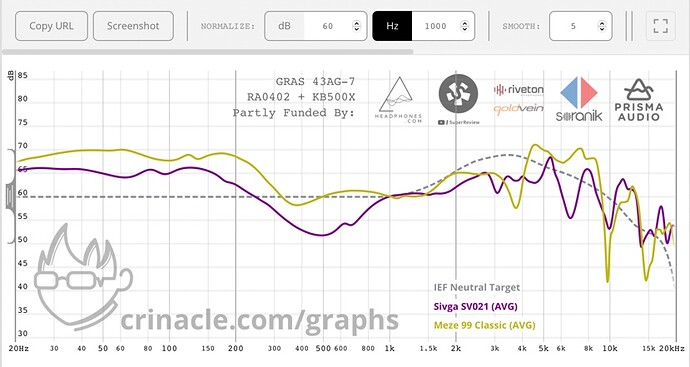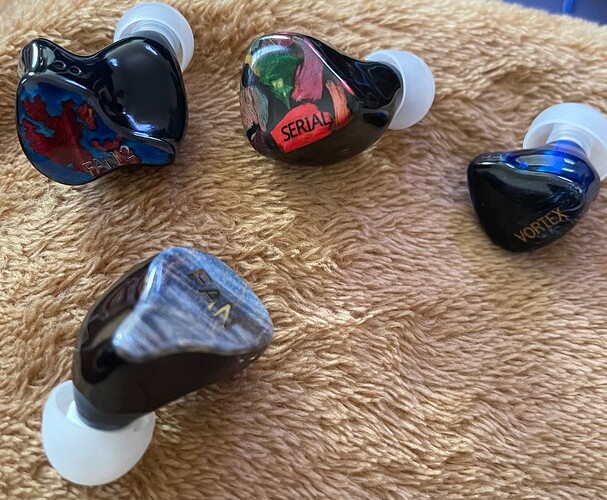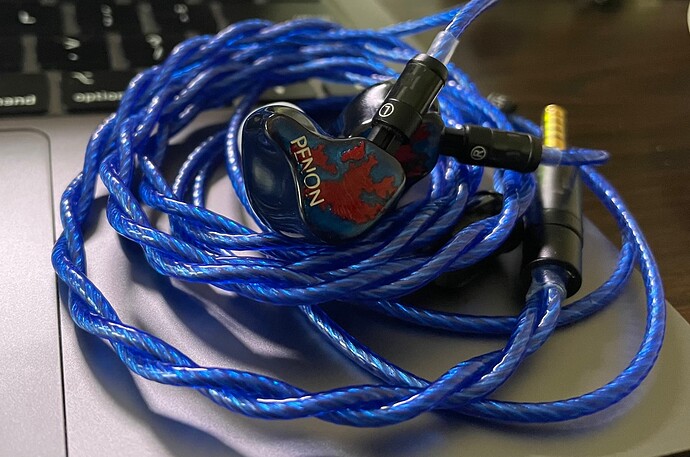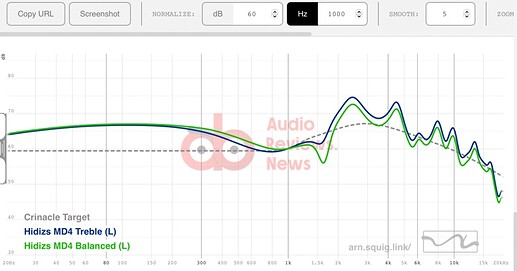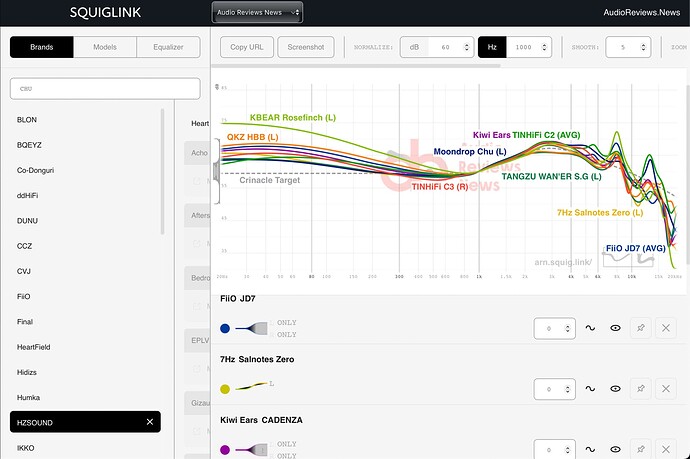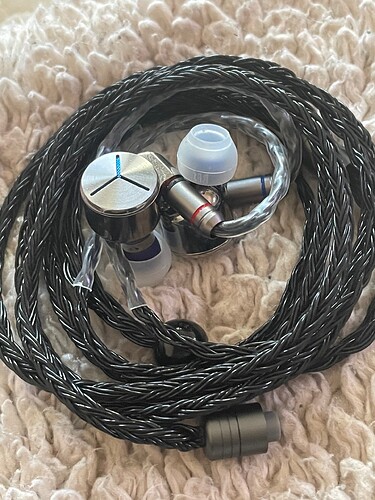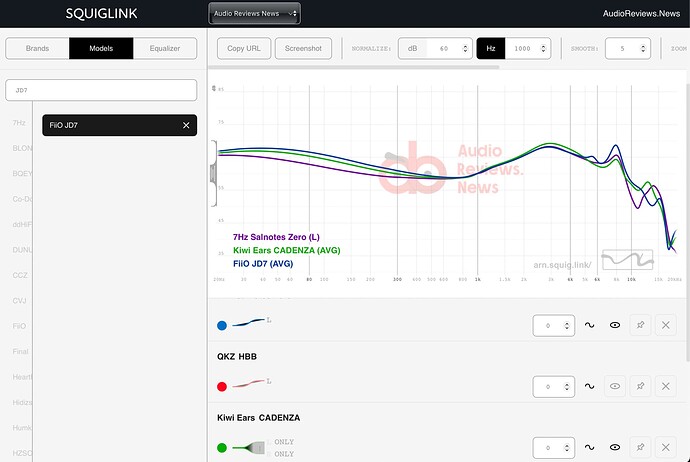Penons Fan 1, Serial, Vortex, and Fan 2 or One Potato, Two, Potato, Three Potato, SCORE!
Finally, I’m almost at the finish line of my first round of “Hey do you want to try out these sets I have that I’d love to get your thoughts/opinions on” and I think I saved the best (review) for last. Penon Audio is a very interesting company: They are a company that has a bit of hype in our audio communities, but that hype doesn’t exactly translate to wide success, because of the particular business model they follow. Even I feel like I’ve been a prisoner of this trap; Based on reviews, graphs, and impressions Penon is absolutely a company I’d like to patronize, but they are also a company that self-gatekeeps their own products to an extent. It took a lot for me to finally pull the trigger and buy Fan 2, and I feel I was greatly rewarded for that leap of faith. I didn’t think I’d get a chance, however, to try out their other offerings until @cal_lando and @rattlingblanketwoman came through clutch and offered to loan me three more Penons for me to give a try. And with that, I am able to present to my thoughts and feelings on the Penon Audio lineup, and what I feel their place in the market is. I hope you enjoy.
Songs to Listen to and Follow Along:
As usual, I’m going to write my thoughts in generalities, but I’ll give you a sample of songs that I listen to, that will relate to the concepts I write about. Feel free to ask for specifics, if you don’t keep up with my thought processes.
Holding On (Rome In Silver Remix) - Dabin (For Female vocals, tonality, mid-bass response within mix From 1:12-1:36)
DISINTER MY HEART - TRAILS (For treble response and resolution, male vocals, midrange response)
The Curse - Agnes Obel (For violin tonality, layering and separation From 1:45)
When I Fall (Outta Love) - Kevin Olusola (For Imaging/detail retrieval :00-:07, tonality, timbre)
The Speedwalker (Live at Madison Square Garden) - The Fearless Flyers and Vulf (For bass elements, imaging/layering/separation
Every Step We Take That’s Synchronized, Every Broken Bone; Reminds Me of the Second Time, That I Followed You Home
I’m going to break down each of the Penon IEMs next, and then we will have a discussion on both the quality of the sets and the business model Penon has chosen for their releases, because I think that is as relevant as “Are these IEMs good?”
Penon Fan 1 (1DD)
Sounds like the V-shape fun tuning. Elevated bass, particularly in the sub-bass, that carries the warmth into a forward (for a V-shape) midrange. Low-midrange isn’t overly affected by the bass and still sounds clear. While I still find a set like KBear Rosefinch to have more pure quantity in bass, when I want to go even further, I can respect this as a very well controlled elevated bass. On Speedwalker, the bass guitar steps more forward but it’s not unpleasant or distracting. Vocals have good tonality. All Penons put warmth in the vocals by the nature of their tuning style, Fan 1 is moderate in this degree; female vocals don’t suffer in timbre. The treble is a mixed bag, where resolution sounds good but not great because the lower treble is emphasized but there’s not much in the middle-to-upper treble. This set has a bit of the “clear but not clear” effect of vocals being forward but lacking resolution. Imaging is average. In When I Fall you get right and left sounds of wind, and a faint amount of swirling effect, but no panning. Fit issues are non-existent on Fan 1.
Penon Serial (3DD)
This is balanced-warm tuning for me. The bass is the emphasis on this set: It’s not that it’s elevated in quantity like Fan, but it hits with a very high quality. The reputation of this set for its sub-bass is well deserved. It’s thick and rich, it’s got some boomy and sometimes flabby (But not as an insult. It’s like “Dad Bod” bass. Ask some girls about that if you don’t think I’m serious. It’s a thing). The mid-bass is not emphasized here, and the mids are clean as whistle. DISINTER MY HEART lacks a little in the mid-bass where the kick-drum is dryer than the other parts of the drum and it’s noticeable. The midrange is fine though. Vocals are very good, nothing to take as a negative. Treble is smooth but lacks the last bits of resolution. Timbre, tonality, separation and detail retrieval are good but not great. Serial is like Fan where it can present details like the sound of wind and some of the swirling correctly but cannot produce the panning effect. Serial is a little bigger and could be a fit issue if you don’t handle medium-to-medium large shells well. Sadly, there is an addendum I must add: If you’ve followed along with any talk about Serial here at HFGF, you remember @nymz’s epic struggle with Serial and issues of unacceptable channel imbalance. I wish I could say I have better news but after being tipped by @rattlingblanketwoman about a potential issue, I did hear it myself. Thanks to the Q5K’s new L/R PEQ, I was able to diagnose a 5-6dB imbalance, where putting a ± 2.5-3dB on the left and right ears made Serial sound audibly balanced. Because I’ve heard about several issues with QC (imbalance and build alike), plus my own personal experience, it is disqualifying for me, regarding Serial (with the caveat that it could be a clogged filter issue. If it was something simple like that, it’s no longer disqualifying but I’d be very wary still).
Penon Vortex (1DD)
While remembering that everything Penon makes is based in warmth, this is their take on neutral-bright tuning. The first thing I note on this is the soundstage: It is forward, and lacks depth because of it, but has good enough width. This puts instruments and vocals into a more intimate space and makes the details more the star of the show. You’re going to listen more to the singer, or band, rather than sink into the music. The bass emphasis is more in the mid-bass here and it’s replay is way more satisfying than on Fan or Serial; the sub-bass is not as present as on Fan 1 or Serial, so you’re going to get more punch than boom but neither is going to be the overall emphasis for you here. This is about the midrange and vocals, and they’re fantastic. The treble is well done, crispy with good resolution. This set has the best detail retrieval of the trio, as it produces the swirling wind effect in “When I Fall” best. Vortex is the smallest IEM shell I’ve ever seen. If you have the problem of dealing with tiny shells, that’s the only thing I can see as a fit concern. This is very much an alternative to Olina, if you still found Olina to be a little lean.
Modded Penon Vortex
At Cal’s behest, I did the Vortex Mod, which is to remove the back filter. This gives a substantial increase to the bass quantity. With the filter removed, there is simply too much bass present, and it overwhelms the rest of the otherwise neutral tuning. In order to make this modification feasible as a listening option, it is necessary to use some amount of dampening. Rather than putting the stock filter back, I tried various amounts of micropore tape, covering the vent completely, and then exposing more of the vent, until I found a balance I preferred. At about half covered, I found the amount that worked best for me. The result was a set that felt like a hybrid of Serial and Fan 2: It had a sub-bass emphasis that was closer to Serial and clarity that was more in line with Fan 2…if I was looking at it as a good thing. If I were glass half-empty, I’d say that it doesn’t have the lushness of Serial, and is brighter/harsher (if you’re so inclined) than Fan 2. This mod pushes the stage forward and makes everything sound more pronounced and in your face.
I completely understand why people who have done the mod can prefer it over the stock tuning, but I also understand Penon’s thinking as to why they tuned Vortex the way they did. Modded Vortex sits in a no-man’s land between Serial and Fan 2. It hits a middle ground between the two, but rather than being a Goldilocks “just right” situation, it feels more like it lacks the thing that makes both Serial and Fan 2 special; Vortex can’t match Serial’s bass performance, and it’s lacking Fan 2’s musicality (even as a neutral-style tuning). Vortex was tuned to fit a style Penon had not otherwise touched (neutral-bright), but brings a musicality that I don’t think you find in that style of tuning. Allowing people to experiment with the back filter is a fine compromise, but I don’t think it would have been the right call to tune Vortex like the mod, OOTB.
Penon Fan 2 (2DD+2BA)
This is Penon’s house sound tuned to bassy-neutral sound. For me, this is the IEM Penon would make as the child of Serial and Vortex. It has more bass emphasis like Serial but the emphasis is more in the mid-bass. Sub-bass is present, but mid-bass is emphasized. This has the neutral, forward mids of Vortex, and the bright low-treble of Vortex, smoother mid-treble of Serial, and air presence of Vortex. These produce the best drum kit I’ve heard, IEM or earbud. I could not ask for more out of the presence in the midbass/low-mids. Vocals are forward and clear, with some warmth/husk on female vocals, but nothing that I find offensive. Soundstage is very good; not the widest staging but plenty of depth (and an improvement on Vortex). Part of that comes from the extra drivers. They allow for better separation and imaging, which probably plays into the soundstage sounding the way it does. This set nails the swirling wind effect in “When I Fall” in a very satisfying way for an IEM, and certainly handles it the best of the four. The problem with Fan 2, if there is any, is going to be fit: It’s a chunky IEM that has one of the most unique stems you’ll ever find on a universal IEM. It’s going to be a problem for some people, but if you can deal with it, that stem is likely a design choice that helps the IEM produce the sound it does.
What Does This All Mean?
I’ll start with my opinion, on the merits of the sets: None of these sets are bad, and in a vacuum I go from “I wouldn’t stop you from buying it if you wanted” (OG Fan), to “It’s worth it if you want it” (Vortex), to “You get my highest recommendation” (Fan 2). We don’t buy IEMs in a vacuum though, and this here is the rub.
Penon is a “small boutique store”. I think of this like a clothing store. In the US, you can go to a department store like a Marshall’s to find the cheapest prices on clothes. You may find some diamonds in there, but this is amongst the low end of the totem pole. Then you have companies like Old Navy, Gap, etc. that are mass-produced, solid but not spectacular clothes from a reputable brand but they’re more midrange if anything. A department store like Nordstroms is a step-up from Marshall’s or the Old Navy/Gaps of the world, but it’s still mid-range, honestly. Then you have places like Brooks Brothers or Lululemon. Well known companies that charge a premium because their reputations are premium. Penon is not in any of those categories, they’re a boutique shop that you’d find in your city; they’re on the strip of area where you find all kinds of shopping, they don’t have a name brand, but you go in and they have nice looking blouses that cost $250, and you think “why are you charging $250 when I could go to Nordstrom and find something cute enough like this for half the price?
“Why should you buy from Penon when you can find something good enough for cheaper?” Case in point: OG Fan is a very good bass-emphasized 1DD for $135, but why not get Rosefinch which is less refined but has Godly sub-bass quantities for $20? Why buy Serial for its insanely great bass for $300 when Fiio JD7 can get close enough in bass production, and for my HTRF is even-to-better across the rest of the signature, (and avoid the unit lottery of Serial) for $80? Why get Vortex for $220 when Truthear Hexa and Olina exist at $80-100? Why get Fan 2 for $280 when KBear Ormosia exists for $60? Brand loyalty for one. If you don’t run into some of the famous QC issues we’ve heard about from Penon (particularly on Serial), these are good IEMs. And if you can take the leap of faith on a new release (like I did with Fan 2), they offer their best and most market accurate offerings on introductory VIP pricing.
But even though I’ve had a good run with all of these IEMs, I do not recommend Penon IEMs at the prices they charge. If Penon had a pricing scale where OG Fan was as close to $50 as possible, Vortex at $80-120, Serial at $150-200, and Fan 2 at $175-220 I could see the path to being more enthusiastic. I don’t have boutique store money to shop Penon, but if you have money that’s burning a hole in your pocket, and you like warmth in your tunings, then Penon is very much a go-to option. At the end of the day, you have to make that decision if this is giving you your money’s worth. That’s going to be it for this review. Enjoy your days, and take care till next time!
Rank For Fan 1: B-
Rank With Personal Bias: B-
Rank For Vortex: B
Rank With Personal Bias: B
Rank For Modded Vortex: B
Rank With Personal Bias: B
Rank For Serial: B+
Rank With Personal Bias: B
Re-Rank For Fan 2: A
Rank With Personal Bias: S+
Combined Ranks As a Food: An Expensive Small-Plate Dinner Out

